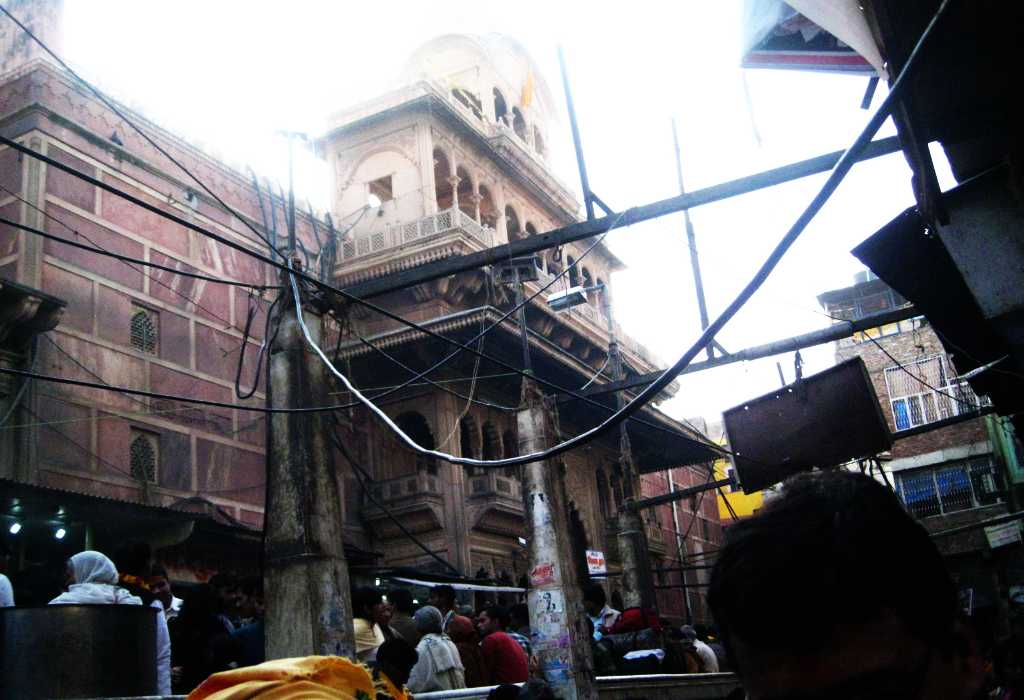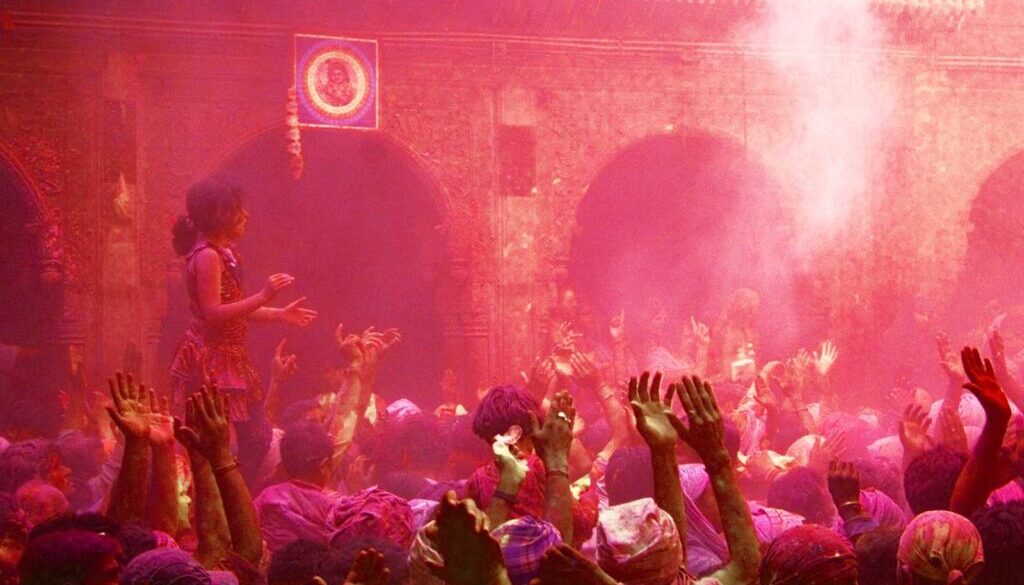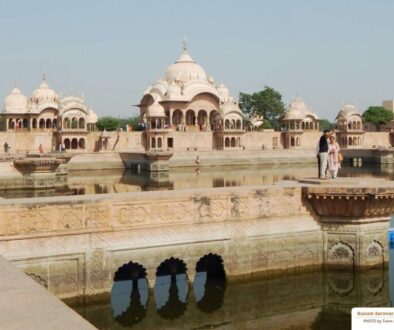Exploring the Spiritual Majesty of Banke Bihari Temple: A Divine Journey in Vrindavan
Vrindavan, a town steeped in devotion and spirituality, is home to one of the most revered temples in India—the Banke Bihari Temple. This sacred site draws millions of devotees and tourists each year, eager to experience the divine presence of Lord Krishna in his most playful and endearing form. In this blog post, we’ll take a deep dive into the rich history, unique rituals, and the spiritual significance of Banke Bihari Temple, ensuring that this guide becomes your go-to resource for everything you need to know about this mystical place.
The Sacred History of Banke Bihari Temple
Origins and Legend of Banke Bihari
Banke Bihari Temple’s origins trace back to the 16th century when the legendary saint Swami Haridas, a renowned devotee of Lord Krishna, was blessed with the appearance of the Lord in the form of Banke Bihari. The term “Banke” refers to the bent posture of Krishna, and “Bihari” signifies the one who enjoys divine play. This idol, a manifestation of the child form of Krishna (Baal Krishna), is believed to be a self-manifested deity, making the temple even more sacred.
Construction of the Temple
The temple itself was constructed in 1864 and is a marvel of Rajasthani architecture. Its intricate designs, beautiful carvings, and the serene atmosphere draw visitors into a world where time seems to stand still, and the worries of the material world fade away.
Unique Rituals and Festivities at Banke Bihari Temple
The Enchanting Mangla Aarti
One of the most fascinating aspects of the Banke Bihari Temple is that the Mangla Aarti, a traditional morning prayer, is performed only once a year, during Janmashtami, unlike other temples where it happens daily. This is because it is believed that Lord Krishna, in his playful child form, should not be disturbed early in the morning.
Phool Bangla: The Flower Mansion
Another unique ritual is the “Phool Bangla” ceremony, which takes place during the summer months. The entire sanctum is decorated with an array of fresh flowers, creating an enchanting floral palace for the deity. The fragrance, combined with the spiritual ambiance, makes this experience truly divine.
Holi and Janmashtami Celebrations
The Banke Bihari Temple is especially famous for its vibrant Holi celebrations. Unlike other temples where Holi is a one-day affair, the festival here is celebrated for over a week, with colors, water, and joy flowing in abundance. Similarly, Janmashtami, the birthday of Lord Krishna, is observed with immense devotion and grandeur, drawing devotees from across the globe.

Spiritual Significance of Banke Bihari Temple
A Place of Divine Vision (Darshan)
The concept of “Darshan” at Banke Bihari Temple is unique. The curtains in front of the deity are drawn frequently, allowing devotees to have brief glimpses of the idol. This is done to protect the devotees from the intense divine energy emanating from the idol, which is believed to be too powerful to bear for long periods.
The Atmosphere of Devotion and Peace
The temple is not just a place of worship; it is a haven of peace and devotion. The constant chanting of bhajans (devotional songs), the fragrance of incense, and the sight of devotees lost in prayer create an atmosphere that is both uplifting and serene.
Architectural Marvels of Banke Bihari Temple
The Rajasthani Influence
Banke Bihari Temple is a masterpiece of Rajasthani architecture. The temple’s facade is adorned with intricate carvings, jharokhas (overhanging enclosed balconies), and jaalis (latticed screens), which are typical features of Rajasthani style. These elements not only add to the temple’s aesthetic appeal but also enhance its spiritual ambiance.
The Inner Sanctum
The inner sanctum of the temple, where the idol of Banke Bihari resides, is the heart of the temple. The sanctum is designed to create a sense of closeness with the deity, allowing devotees to feel an intimate connection with Lord Krishna. The soft lighting, the shimmering idol, and the subtle floral decorations combine to create an ethereal experience for every visitor.
Visiting Banke Bihari Temple: A Practical Guide
Best Time to Visit
While the temple is open throughout the year, the best time to visit Banke Bihari Temple is during the festivals of Holi and Janmashtami. However, if you prefer a quieter experience, visiting during the early morning hours on regular days can offer a more peaceful darshan.
Getting There
Vrindavan is well-connected by road and rail. The nearest major city is Mathura, which is just 11 km away and can be reached easily by taxi or auto-rickshaw. The temple is located in the heart of Vrindavan, making it accessible from various parts of the town.
Dress Code and Etiquette
Visitors to Banke Bihari Temple are advised to dress modestly, with both men and women covering their shoulders and knees. Shoes must be removed before entering the temple, and it’s important to maintain decorum, respecting the spiritual atmosphere.
Accommodation and Amenities
Vrindavan offers a range of accommodation options, from budget guesthouses to luxurious hotels. Many visitors prefer to stay near the temple to immerse themselves fully in the spiritual environment. Additionally, the town has numerous eateries offering vegetarian food, catering to the needs of pilgrims and tourists alike.
The Impact of Banke Bihari Temple on Vrindavan’s Culture
A Center of Bhakti Movement
Banke Bihari Temple has played a pivotal role in promoting the Bhakti movement in India. The temple’s emphasis on devotion and love for God, irrespective of caste or creed, has made it a symbol of spiritual egalitarianism.
Influence on Local Arts and Crafts
The temple has also influenced local arts and crafts, with many artisans in Vrindavan creating paintings, sculptures, and handicrafts inspired by the temple and its deity. These items are popular among tourists and devotees, serving as souvenirs of their visit.
Contribution to Vrindavan’s Economy
The influx of pilgrims and tourists to Banke Bihari Temple has significantly contributed to the local economy. The temple’s presence has spurred the growth of numerous businesses, including hotels, restaurants, shops, and travel agencies, all of which thrive on the spiritual tourism that the temple attracts.
Frequently Asked Questions about Banke Bihari Temple
What is the significance of the name “Banke Bihari”?
The name “Banke Bihari” is derived from the posture of Lord Krishna, where “Banke” refers to his bent form, and “Bihari” means the one who enjoys divine play.
What are the temple timings?
The temple is generally open from 7:45 AM to 12:00 PM and from 5:30 PM to 9:30 PM. However, timings may vary during festivals and special occasions.
Can I participate in the temple’s rituals?
Yes, devotees can participate in various rituals at the temple, especially during festivals. However, it’s advisable to check with the temple authorities for specific details.
Is photography allowed inside the temple?
Photography is generally not allowed inside the inner sanctum to maintain the sanctity of the place. However, you can take pictures of the temple’s exterior and the surrounding areas.
Conclusion
Banke Bihari Temple is more than just a place of worship; it is a spiritual experience that leaves a lasting impact on the hearts and minds of those who visit. Whether you are a devout follower of Lord Krishna or someone seeking peace and solace, the temple offers an atmosphere that is both welcoming and transformative. From its rich history to its unique rituals, the temple stands as a testament to the enduring power of devotion and faith.
As you plan your visit to this divine destination, remember that the true essence of Banke Bihari Temple lies not just in the rituals and the architecture, but in the love and devotion that fills the air, making every moment spent here a step closer to the divine.


